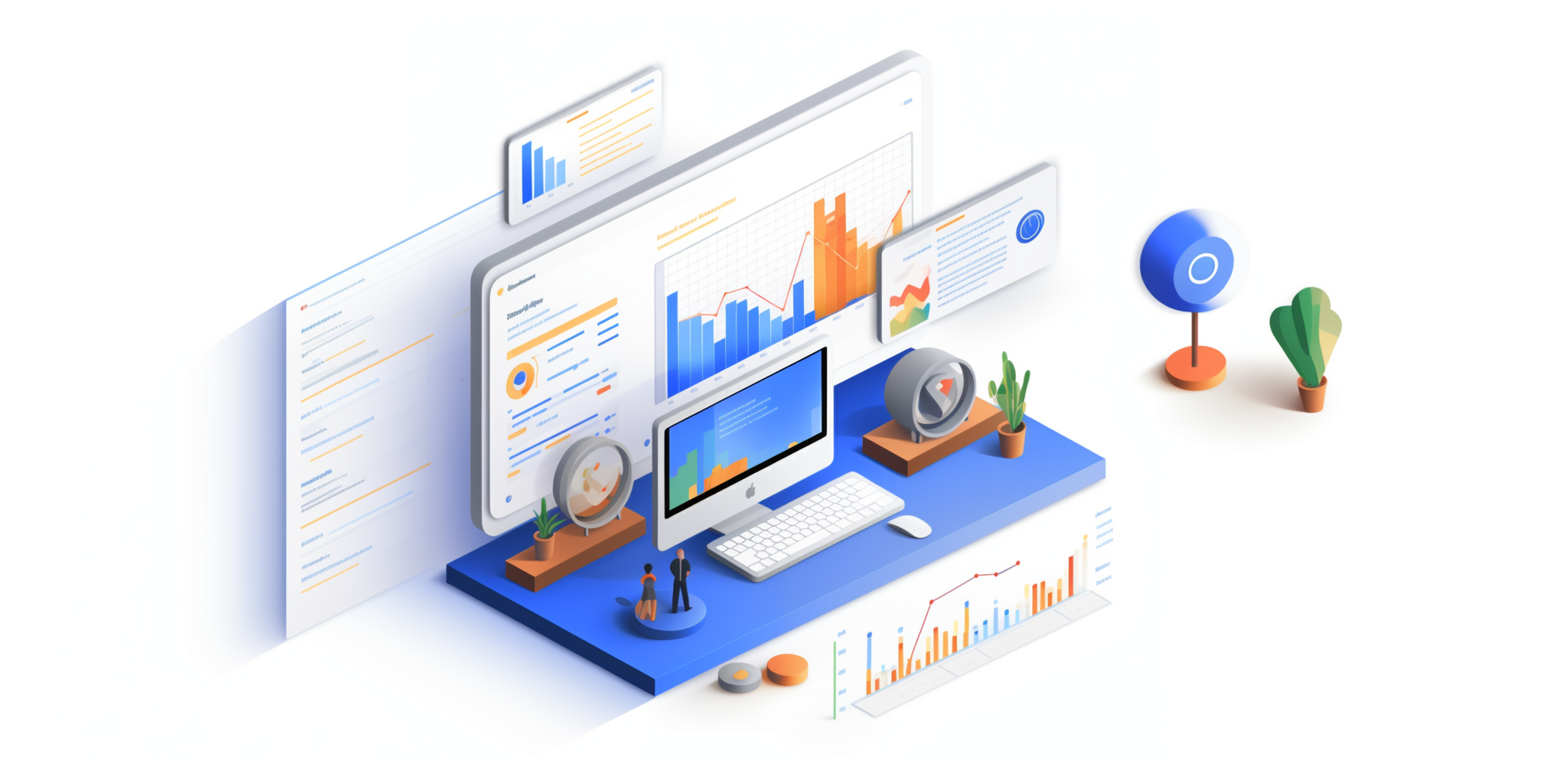
Sie werden beobachtet, und das wissen Sie wahrscheinlich. Ihr Internetverhalten wird verfolgt. Wenn Sie eine Website besuchen, um nach einer neuen Jeans zu suchen, ist es durchaus möglich, dass Sie später Anzeigen für diese Jeans in Ihrem Facebook-Feed sehen.
Es gibt Mechanismen zur Internetverfolgung, und wir nennen sie Cookies. Es gibt verschiedene Arten von Cookies, die unterschiedliche Funktionen haben und unterschiedliche Auswirkungen auf die Privatsphäre haben.
Die Informationen in diesem Blog sollen Ihnen eine Einführung in Cookies und Tracking-Technologien bieten.
Was sind Cookies?
Cookies sind Daten in Form von Text, die Ihren Computer identifizieren können, während Sie Ihr Computernetzwerk verwenden. Wenn Sie eine Website besuchen, wird das Cookie an Ihren Computer gesendet und in Ihrem Webbrowser gespeichert.
Die Informationen im Cookie werden bei Ihrer Verbindung von einem Server erstellt. Die Daten sind mit einer spezifischen ID gekennzeichnet, sodass der Server bei erneutem Austausch des Cookies zwischen Ihrem Computer und dem Server weiß, welche Informationen Ihnen bereitgestellt werden sollen.
So merken sich Websites Ihre Anmeldeinformationen oder Spracheinstellungen, wenn Sie zur Website zurückkehren.
Es ist erwähnenswert, dass Cookies nach der DSGVO personenbezogene Daten sind. Sie müssen rechtskonform verwendet werden!
Was ist der Unterschied zwischen First-Party- und Third-Party-Cookies?
Nicht alle Cookies sind schlecht. Cookies können auch funktional sein. Es gibt verschiedene Arten von Cookies, aber wir können sie in zwei Kategorien unterteilen: First-Party-Cookies und Third-Party-Cookies.
Was sind First-Party-Cookies?
Ein First-Party-Session-Cookie oder ein 'temporäres Cookie' behält nur Informationen über den Benutzer, solange der Benutzer auf der Website ist. Sobald der Browser geschlossen ist, werden Cookies gelöscht.
Angenommen, Sie kaufen online ein und legen mehrere Produkte von verschiedenen Seiten in Ihren Warenkorb. Das Cookie stellt sicher, dass der Warenkorb, wenn Sie zur Kasse gehen möchten, mit den während Ihrer Sitzung angeklickten Artikeln gefüllt ist.
Eine Website, die sich an Ihre Anmeldeinformationen und Ihr Passwort erinnert, verwendet ebenfalls ein First-Party-Cookie, diesmal ein 'Tracking-Cookie'. Die Informationen im Cookie werden für einen längeren Zeitraum gespeichert und stellen sicher, dass Sie Ihr Passwort nicht jedes Mal eingeben müssen, wenn Sie die Website besuchen. Sie müssen jedoch nach einer bestimmten Zeit gelöscht werden, wahrscheinlich nach zwei Jahren. Datenschutzregulierungsbehörden und Internetbrowser verkürzen jedoch die rechtliche Speicherzeit eines Cookies.
First-Party-Cookies werden direkt von der besuchten Website installiert.
Sie erinnern sich an Spracheinstellungen, Einkaufswagen, Anmeldeinformationen und erfüllen andere funktionale Zwecke, um die Benutzererfahrung zu verbessern.
Was sind Third-Party-Cookies?
Third-Party-Cookies sind eine andere Spezies. Sie werden von Vermarktern verwendet, um sicherzustellen, dass ihre Produkte oder Dienstleistungen an die richtige Zielgruppe gerichtet sind. Sie können Besucher über mehrere Domains hinweg verfolgen und so ein umfassenderes Bild vom Benutzerverhalten erstellen.
Third-Party-Cookies werden von Dritten wie Google und Facebook auf Websites installiert, um einen anderen Zweck zu erfüllen, nämlich so viele Informationen über Website-Besucher mit kommerziellen Absichten zu sammeln.
Wahrscheinlich hat jeder schon einmal Facebook-Anzeigen von Produkten oder Websites gesehen, die er in der Vergangenheit besucht hat. Das liegt an Third-Party-Cookies. Diese Third-Party-Cookies können aktiviert werden, wenn eine Website beispielsweise die Facebook 'Gefällt mir'-Schaltfläche auf ihrer Seite verwendet oder Google Analytics installiert hat. Dadurch können diese Unternehmen Third-Party-Cookies auf Ihrem Gerät speichern. Big Tech beobachtet Sie.
Was ist Fingerprinting?
Eine weitere Technologie zur Verfolgung von Besuchern nennt sich Fingerprinting. Es ist eine Methode zur Profilerstellung von Internetnutzern basierend auf ihren Hardware- und Softwarepräferenzen. Es wird von Unternehmen verwendet, um Sie anhand der spezifischen Konfiguration, die Sie zum Surfen im Internet verwenden, zu identifizieren. Es gilt als genauso invasiv wie cookiebasierte Tracking-Methoden.
Websites, die Fingerprinting-Technologien verwenden, können einen Besucher monatelang verfolgen, selbst wenn Sie alle Ihre Cookies und den Browser-Speicher gelöscht haben.
Welche Browser deaktivieren Third-Party-Cookies?
Die Einführung von Datenschutzbestimmungen wie der DSGVO & PECR hat das öffentliche Bewusstsein für die Privatsphärenverletzung durch Cookies und andere Tracking-Technologien erhöht. Als Reaktion darauf haben Webbrowser begonnen, Datenschutzmaßnahmen für ihre Benutzer hinzuzufügen. Die Schutzmaßnahmen sollen bestimmte Arten von Cookies oder anderen Tracking-Technologien blockieren. Die Strengheitsgrade zwischen Webbrowsern reichen jedoch von sehr streng bis gar kein Schutz.
Safari (Apple)
Safari gilt als sehr streng. Es hat Third-Party-Cookies vollständig blockiert, was bedeutet, dass Google und Facebook einen Besucher nicht über mehrere Websites hinweg verfolgen können. Darüber hinaus halten persistente Cookies wie First-Party-Tracking-Cookies nur 7 Tage. Wenn der Besucher über eine Plattform mit Cross-Tracking-Fähigkeiten auf Ihre Website gelangt, bleibt das Cookie nur 1 Tag lang bestehen. Dies erschwert die Zuordnung eines Besuchers zu einer bestimmten Marketingkampagne. Lesen Sie ihre vollständige Cookie-Richtlinie.
Firefox (Mozilla)
Firefox ist eher 'mittel bis streng'. Third-Party-Cookies sind blockiert, sodass das Verfolgen von Besuchern über mehrere Websites nicht möglich ist. Es wird schwieriger, Remarketing-Kampagnen zu erstellen, aber das Verständnis für die Auswirkungen der Kampagnen kann immer noch ziemlich genau erfolgen, da das Google Analytics-Skript weiterhin ausgeführt wird. Lesen Sie ihre Cookie-Richtlinie.
Chrome (Google)
Es überrascht nicht, dass Google Chrome der am wenigsten strenge Internetbrowser ist. Google hat angekündigt, dass es in den nächsten zwei Jahren Third-Party-Cookies blockieren wird. Das Geschäftsmodell von Google ist zu sehr auf Werbung angewiesen, dass es einen Ausgleich zwischen den Wünschen der Werbetreibenden und den Forderungen der Benutzer finden muss. Im Grunde genommen erlaubt Google Chrome alle Arten von Cookies auf Ihrem Gerät. Lesen Sie ihre Cookie-Richtlinie.
Edge (Microsoft)
Microsoft Edge wird ebenfalls als 'mittel bis streng' angesehen. Es blockiert Third-Party-Cookies, lässt jedoch Analysetools unberührt. Die Standardeinstellung verhindert nicht, dass Analysetools Cookies setzen, und auch die Lebensdauer ist nicht begrenzt.
Die meisten Browser sind sich bewusst, dass Third-Party-Cookies schlecht sind. Nur Google Chrome blockiert (noch) keine Third-Party-Cookies, und dies ist wichtig zu beachten, da Chrome bei weitem der größte (Desktop-) Webbrowser in Bezug auf den Marktanteil ist. Lesen Sie ihre Cookie-Richtlinie.
Brave
Brave ist im Herbst 2019 aus der Beta-Version herausgekommen und hat sich als "anti-Werbung" -Browser vorgestellt. Es entfernt Anzeigen von Websites und ermöglicht es dem Benutzer, sich für seine eigene Reihe von anonymisierten Anzeigen zu entscheiden. Sein Angebot konzentriert sich vollständig darauf, ein Datenschutz-Browser zu sein.
Standardmäßig blockiert es Third-Party-Cookies und andere Tracking-Mechanismen. Sie können Anzeigen und First-Party-Cookies manuell blockieren. Der Schutz vor Fingerprinting ist ebenfalls in seinem Werkzeugkasten enthalten. Lesen Sie ihre Cookie-Richtlinie.
Google Chrome hat erklärt, dass es bis 2022 schrittweise Third-Party-Cookies auslaufen lassen wird. Sie haben jedoch bereits die Frist auf Ende 2023 verschoben.... Persönlich fällt es mir schwer zu glauben, dass sie dies tatsächlich tun werden, da dies erhebliche Auswirkungen auf ihr Geschäftsmodell haben wird.
Wir werden sehen, wie sich das entwickelt, aber vorerst, wenn Sie nicht von Third-Party-Cookies verfolgt werden möchten, bleiben Sie von Google Chrome fern. Entscheiden Sie sich für Brave oder bleiben Sie zumindest von Google Chrome fern.
Brauche ich ein Cookie-Banner?
Als Website-Besitzer, wenn Sie das individuelle Besucherverhalten verfolgen möchten und sich entscheiden, Cookies auf dem Gerät Ihrer Benutzer zu installieren, müssen Sie bestimmten Datenschutzbestimmungen entsprechen.
Zunächst sollten Sie sich die Frage stellen, warum Sie überhaupt das Verhalten einzelner Besucher verfolgen möchten. Es gibt zahlreiche Möglichkeiten, Einblicke in Website-Statistiken oder Benutzerverhalten zu erhalten, ohne personenbezogene Informationen zu verfolgen.
Wenn Sie sich dafür entscheiden, mit dem Tracking Ihrer Benutzer fortzufahren, sind Sie verpflichtet:
- Mitteilen, dass sie Cookies installiert haben und klären, welche sie verwenden
- Erklären, was die Cookies tun und warum
- Die Zustimmung des Benutzers einholen, ein Cookie in seinem Browser zu speichern
Sie können diese Informationen in einem Cookie-Banner bereitstellen, der angezeigt wird, wenn ein Erstbesucher Ihre Website besucht. Es informiert den Besucher über die von Ihrer Website verwendeten Cookies und Tracker und fordert die Zustimmung des Besuchers zur Speicherung von Cookies in seinem Browser an.
Neben der Tatsache, dass Sie sich fragen müssen, ob Sie diese Daten wirklich benötigen, sind Cookie-Banner einfach nur lästig und beeinträchtigen die Benutzererfahrung Ihrer Website. Um Ihre Website zu besuchen, müssen Besucher zunächst mit dem Cookie-Banner interagieren.
Wenn Sie beispielsweise Google Analytics auf Ihrer Website verwenden, um die Leistung Ihrer Website zu verfolgen, sind Sie gesetzlich verpflichtet, ein Cookie-Banner bereitzustellen und um Zustimmung zu bitten.


